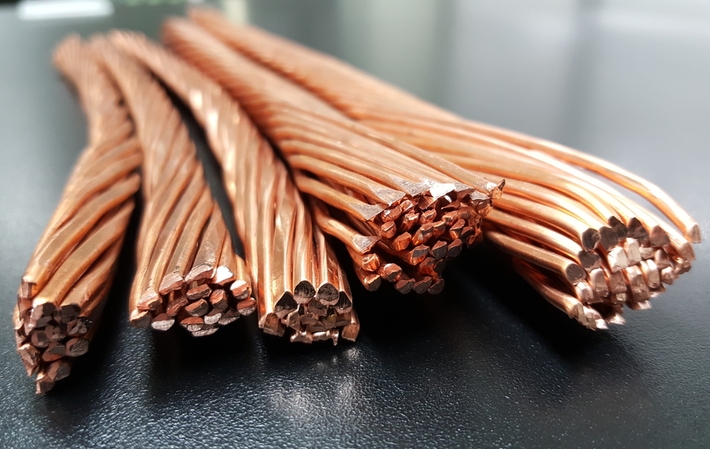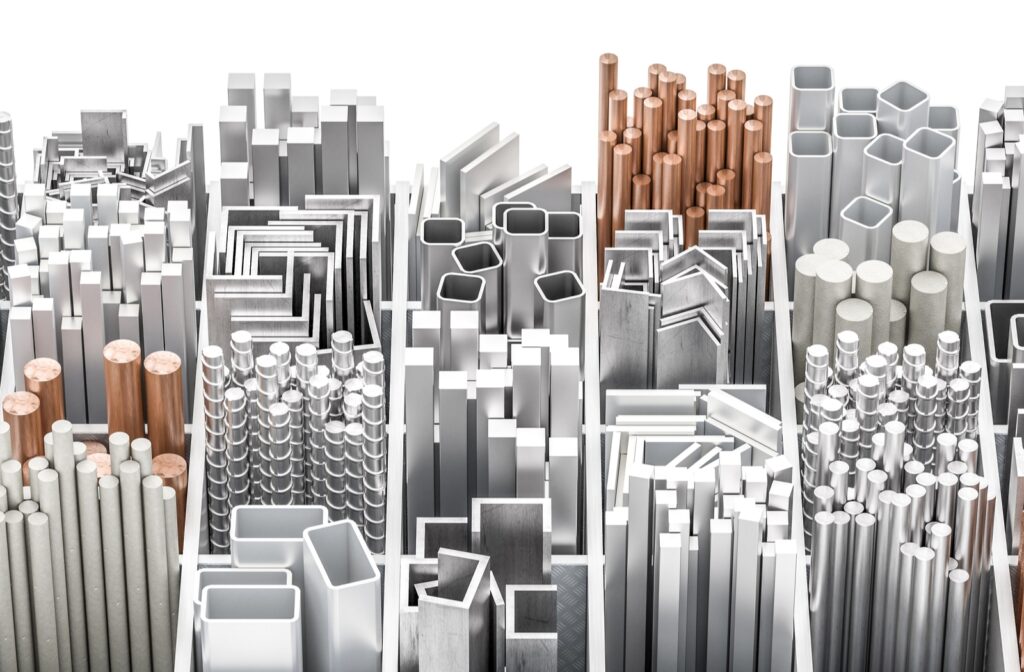Recycled metal keeps new ore from being needlessly mined and makes new construction projects more sustainable. Nowadays, construction companies incorporate recycled materials into their new building plans.
If you’re a new homeowner, construction business owner, or have access to scrap metal, recycling it is a great way to make money and make an environmental impact. To get started, you’ll need to know how to identify metals and where you can sell them to get the best price.
Ferrous vs. Non-Ferrous Metals
A magnet is an essential tool when identifying metals. Why? Because a magnet helps you tell the difference between ferrous and non-ferrous metals.
Ferrous metals are magnetic because they contain iron. Some examples of ferrous metals include:
- Alloy Steel
- Carbon Steel
- Cast Iron
- Wrought Iron
Non-ferrous metals are not magnetic and are usually far more malleable than ferrous metals. They are beneficial because they are more rust-resistant due to their lack of iron. Some examples of non-ferrous metals are:
- Aluminum
- Copper
- Lead
Common Metals Used in Construction
If you look around Calgary, you’ll find construction projects at different stages of completion. These stages require an array of metals for multiple uses. Understanding how construction companies use metals will help you determine their value and when to buy and sell them.
Steel
Steel is a metal alloy made of iron and a small amount of carbon. The carbon addition improves strength and durability and makes steel less susceptible to corrosion than iron.
Steel is versatile. For example, rebar steel is used to reinforce concrete by adding tensile strength, making it essential to a building’s structure. On the other hand, stainless steel is used for its striking beauty on surfaces like doors, countertops, and accents.
Whether buying or selling, it’s essential to know the difference between quality and cheap steel. You’ll want to trust that your steel will hold up well when you use it if you’re buying. On the selling side, knowing if your steel is high quality will help you get the best price for it.
The key ways to identify steel are:
- Use a magnet: a magnet should be your first step because it will help determine whether a metal is ferrous or non-ferrous.
- Feel the weight: stainless steel and aluminum are both shiny and can be mistaken for each other, but stainless steel is heavier.
- Determine hardness: using a metal file, scrape the metal. Steel is harder than other metals, so this should take some work.
Iron
Iron comes in two common varieties: cast iron and wrought iron. Cast iron is brittle and resistant to wear, often used in water pipes, car engines, and stoves. Wrought iron is most common in fencing, railings, chains, and nails.
Iron is similar to steel because it is ferrous. If you’re handy and have access to the right tools, you can complete a spark test. A magnet test will help you determine if your mystery metal is iron.
To determine if your metal is iron, look for:
- Spark colour: cast iron sparks are a deep red colour & wrought iron sparks are white-yellow
- Spark length: cast iron sparks are very short & begin at the grinding wheel; wrought iron sparks are long and flow in straight lines
- Spark forking: cast iron sparks do not fork at all & wrought iron sparks widen near the end to look like a spoon

Copper
Copper is the oldest metal in the world still used in construction. The key characteristics that make copper so useful are:
- It is ductile, meaning it can be drawn out into long lines
- It is conductive, meaning it produces electricity effectively
- It is versatile, meaning it has multiple purposes
These characteristics make copper an excellent option for electrical wiring, oil and gas lines, and heating systems. Copper is easy to identify because of its reddish-orange tint. Sometimes you’ll see houses with copper roofs, which turn green over time due to oxidation.
Copper doesn’t lose its chemical properties through the recycling process, so manufacturers can reuse it many times.
Aluminum
Aluminum is lightweight, strong, and malleable, perfect for construction projects. Aluminum is helpful for:
- Cladding systems on walls
- Lighting and antenna towers
- Road and construction signs
- HVAC systems and air ducts
Aluminum is often mistaken for tin because both are silvery and usually produced in sheets, making them flexible. Use the magnet test if you are unsure since aluminum is non-magnetic and tin is magnetic.
Lead
Lead is highly toxic, but it can be made safe by alloying it with other elements. Construction companies use lead for outdoor applications such as:
- Roofs
- Ducts
- Cladding
- Gutters
- Downpipes
- Flashing
Lead is easy to identify because it’s heavy. Even a tiny amount of lead will have some weight to it since it’s so dense.
The Benefits of Recycling Metal
Remember: a magnet is your most helpful tool to identify metals and start your metal recycling journey. Recycling metal leaves a positive environmental impact, and companies are constantly innovating new ways to reuse metal sustainably.



